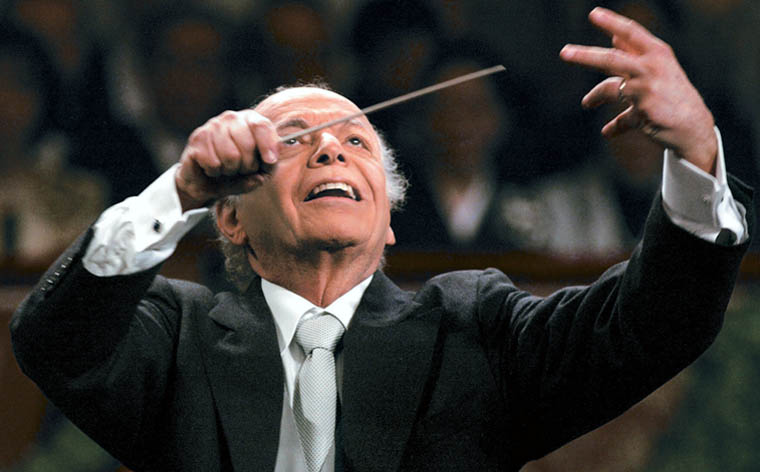Lorin Maazel, whose 65-plus-year career spanned from child prodigy to conductor of the New York Philharmonic, is retiring from that organization at the end of this season. His seven years with them oversaw a host of radio broadcasts, the advent of web video and a commission for the events of 9/11—John Adam’s On the Transmigration of Souls. In addition, he brought a deep musicality and helped develop a signature sound, earning the love of his musicians. Oh, and he even brought them to Pyongyang, North Korea, a surprising cultural gesture to that troubled country.
 I recently had an opportunity to visit New York and obtained tickets to hear this legendary conductor. However, during my visit Maazel was conducting Britten’s War Requiem, a piece which UC Berkeley performed—and I reviewed—just last April (see May 5, 2009 Piedmont Post). Eager to hear the NY Philharmonic, I persuaded myself that this unusual piece more than merits two reviews.
I recently had an opportunity to visit New York and obtained tickets to hear this legendary conductor. However, during my visit Maazel was conducting Britten’s War Requiem, a piece which UC Berkeley performed—and I reviewed—just last April (see May 5, 2009 Piedmont Post). Eager to hear the NY Philharmonic, I persuaded myself that this unusual piece more than merits two reviews.
And I am fervently glad that I did.
Britten’s opening was electric—bass trombone and contrabassoon were deep and abrupt, as disturbing as Berlioz’ low blasts at the entrance to Hell in his Damnation of Faust.
Avery Fisher Hall at Lincoln Center is both longer and narrower than Berkeley’s Zellerbach, and the acoustics are far more favorable. Though the hall is huge, its unadorned lines and flat masses kept the sound lively but not muddy. The Bay Area’s drafty venues could certainly be improved, but acoustics remains more art than science.
Packed across the back of the deep stage, men and women of the doubled chorus alternated a monotone chanting, “requiem aeternam.” The Dessoff Symphonic Choir was swelled by members of the New York Choral Artists for a sound that had muscle yet retained Britten’s ethereality. Exceptional clarity allowed the massive vocals to drop to pianissimo in the kyrie. And then they gathered for the sharp staccato of the Dies irae, the Day of Judgement.
Britten’s writing approaches the hostile, almost a contempt for churchly forms. The tuba mirum, where gold-tongued trumpets normally unfurl the glories of Heaven for Judgement Day, he replaces with sharp volleys of bugle and the snare drums of war. Kettle drums swelled and subsided, a soft thunder of distant bombardment. Reinforcing his metaphor of war as heavenly retribution, baritone soloist Ian Greenlaw sang from the poetry of World War I poet Wilfred Owen:
Bugles sang, saddening the evening air;
And bugles answered, sorrowful to hear.
The Philharmonic brass punctured the air in tight formations, eagle-eyed on Maazel’s baton, and it is small wonder their reputation is among the finest in the world.
Nancy Gustafson sang the soprano solo from extreme stage right, while tenor Vale Rideout and Greenlaw haunted the opposite wing. Their operatic voices filled the hall with ease. Gustafson alternated a slower grief with the sharper cadences of anger, and when the chorus finished her explosive syllables in the Lacrimosa they created a spine-tingling texture of thick and thin.
At Zellerbach the best Bay Area musicians were gathered for one day to produce this awesome work, and I commented that Britten’s work was “uneven.” Maazel, using the best of musicians and forging them into single purpose over years, proved me wrong. The work has some insanely difficult moments, but Maazel gave it unity, beauty and dignity.
The Bay Area’s vision held a rougher power. Curiously, though it was less polished, it remained deeply moving. And perhaps it was even more eloquent for its lack of polish.
Next week Maazel conducts Mahler’s No. 9, the “Symphony of a Thousand.” It is his last bow and a grand finale on which to exit the Philharmonic.
—Adam Broner
Photo: Lorin Maazel
